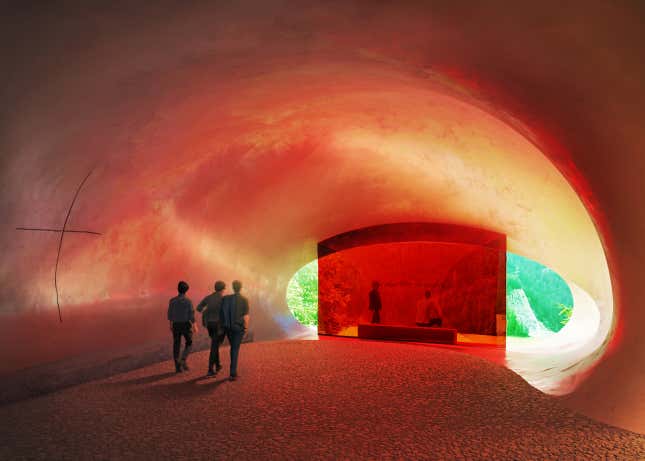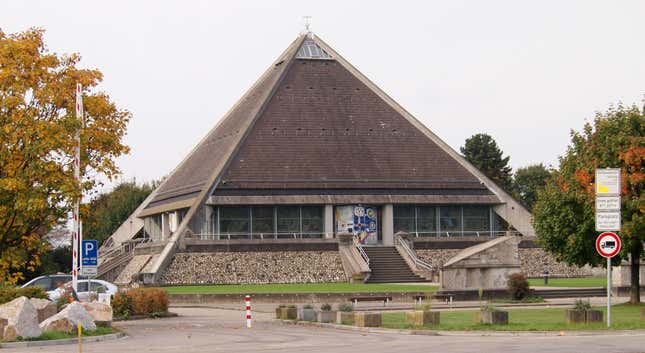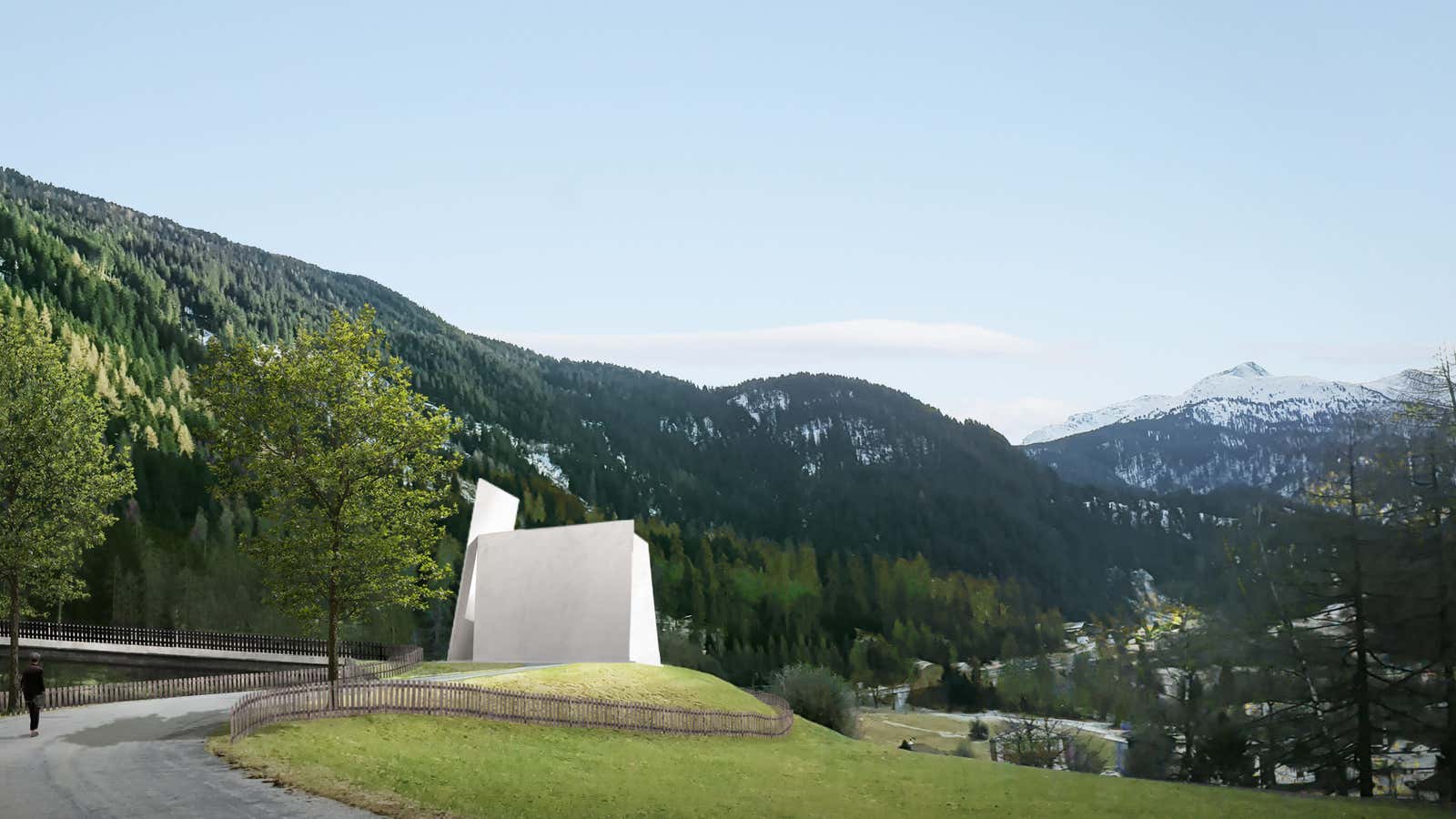A different kind of rest area is being planned along Switzerland’s A14 highway. Near the town of Andeer will be the country’s first religious structure dedicated to travelers seeking a type of spiritual refueling.
Currently in the design stage, the striking roadside church (or autobahnkirche) is modeled after the 50 or so prayer pitstops throughout Germany. As church attendance continues to decline in Western Europe, new types of spaces for individual contemplation are gaining popularity, explains Jens Koehre, a pastor in Andeer.
In a phone interview with Quartz, Koehre says that about a million motorists visit Germany’s network of autobahnkirche each year, with the majority being men aged 40 to 60. “They’re driving, they’re thinking about their life, and these places give them a space to process their feelings and maybe release their emotions,” he explains.
Motorist churches are particularly attractive for their anonymity, according to Koehre. “It’s for people who don’t want to pray with a community. We need new spaces for this type of spirituality. We need spaces for people to pray on their own,” he says, noting that the chapel will be open to visitors of all faiths.
Koehre’s observation echoes recent research showing that more and more Swiss citizens are leaving Catholic and Reformed parishes. A 2019 Swiss Federal Statistics Office study suggests that over a quarter of the population say that they don’t belong to any religious group.
Celebrated Swiss architecture firm Herzog & de Meuron took the yearning for solemnity to heart. Perhaps best known for designing the Beijing National Stadium, the firm says it deliberately designed a “very introverted” structure as a counterpoint to the ornate medieval churches and chapels found elsewhere in Switzerland.

The renderings reveal a 3,000 sq ft (258 sq m) minimalist building with a series of poetic subterranean chapels, as described in a press statement:
The deeper you go, the weaker the sounds from the motorway and the stronger the sound of your own footsteps. Finally, when you reach the last room, strong daylight streams into the heart of the chapel and you see a panoramic view of the landscape, the village, and the lush green meadows and woods. Perception of the vegetation is heightened by the complementary red of a room-height pane of tinted glass. The sun, setting in the evening, shines through the red glass into this last portion of the chapel, which leads directly to the landscape outside.
Not all motorway chapels are this subdued, of course. Germany’s most visited religious roadside attractions is the kitschy, pyramid-shaped Autobahnkirche St. Christophorus in Baden-Baden.

